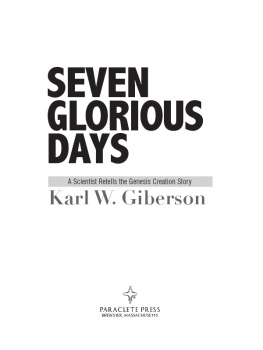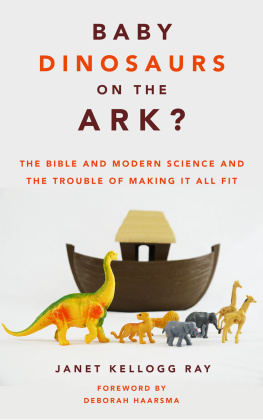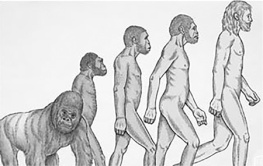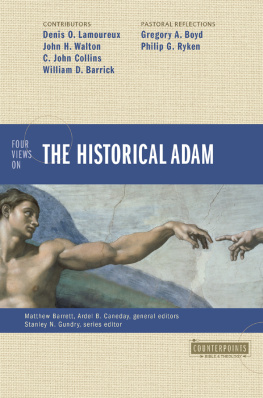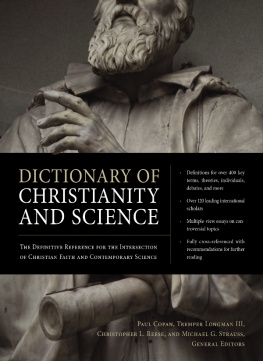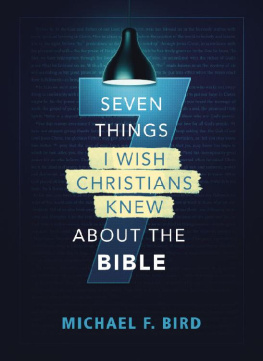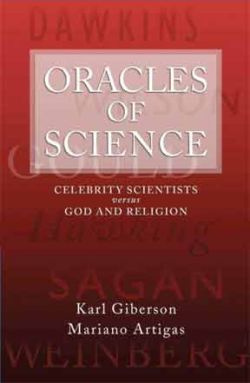
BEACON PRESS
Boston, Massachusetts
www.beacon.org
Beacon Press books
are published under the auspices of
the Unitarian Universalist Association of Congregations.
2015 by Karl Giberson
All rights reserved
Printed in the United States of America
Unless otherwise noted, all Scripture quotations are from the New Revised Standard Version of the Bible, copyright 1989, Division of Christian Education of the National Council of the Churches of Christ in the United States of America, and are used by permission.
18 17 16 15 8 7 6 5 4 3 2 1
This book is printed on acid-free paper that meets the uncoated paper
ANSI/NISO specifications for permanence as revised in 1992.
Text design and composition by Kim Arney
Library of Congress Cataloging-in-Publication Data
Giberson, Karl.
Saving the original sinner : how Christians have used the Bibles first man
to oppress, inspire, and make sense of the world / Karl Giberson.
pages cm
Includes bibliographical references and index.
ISBN 978-0-8070-1251-2 (hardcover : alk. paper)
ISBN 978-0-8070-1252-9 (ebook)
1. Adam (Biblical figure)Influence. 2. Bible. Genesis, IIIICriticism, interpretation, etc.History. 3. ChristianityInfluence. 4. Theology,
Doctrinal. I. Title.
BS580.A4G53 2015
222.11092dc23
2014043788
To my wife, Myrna
P ROLOGUE
I n midwinter 1656, fourteen years after Galileo had died peacefully in his Tuscany home, still under house arrest for his views on the motion of the earth, armed men burst into the home of another subversive, the French Calvinist Isaac La Peyrre, and hauled him off to prison. Heresy hunters had dispatched them to deal with a threat to Christianity even greater than that of Galileo. After enhanced interrogations La Peyrre was escorted to Rome where, after an audience with the pope, he recanted his heresy, rejected his Calvinism, and joined the Roman Catholic Church.
In midwinter 2011 as I started work on this book, another scholar, this time an American Calvinist named John Schneider, was summoned by heresy hunters and interrogated for the same beliefs that had threatened La Peyrre.
The heresy was the status of the biblical Adam. La Peyrre got in trouble for his book Men before Adam, arguing that Adam was not the first man. While no historically celebrated trial accompanied Schneiders interrogation, he, like Galileo and La Peyrre, still suffered serious consequences: he lost the job he had heldand lovedat Calvin College for a quarter century. His crime was a 2010 article Recent Genetic Science and Christian Theology on Human Origins, published in Perspectives on Science and Christian Faith, which suggested that not only was Adam not the first man but that he never existed.
INTRODUCTION

O UR C OMMON A NCESTOR
Then the Lord God formed man from the dust of the ground, and breathed into his nostrils the breath of life; and the man became a living being.
GENESIS 2:7
I n the fall of 2009 I visited the Creation Museum in Petersburg, Kentucky. I was in the area to speak at Xavier University, where a class taught by a Jesuit theologian was using my book Saving Darwin: How to Be a Christian and Believe in Evolution, a deeply personal account of my ownand Americasstruggle to understand Darwins controversial theory of our origins.
My visit to the Creation Museum was bittersweet and ironic: bittersweet because the beautiful story of creation told in the museums lovingly constructed dioramas had once been at the heart of my religious beliefs, growing up in a Baptist parsonage among the potato fields of New Brunswick, Canada. As a youth, uncharacteristically obsessed with theology and biblical studies, I had dreamed of one day working with organizations like Answers in Genesis that had built the Creation Museum.
My goal when I enrolled at an evangelical liberal arts college in 1975 was to train in science and join the creationist cause, an ambition soon derailed when I discovered that creationism was scientifically indefensible. But now, as I explored the museums deeply biblical displays of Adam and Eve, their temptation and sin, and their expulsion from Eden, I felt sadness. I wondered about my younger self, the debater forever defending creationism, convinced that the only origins story that mattered was the one in Genesis, that Adam and Eve were as historical as Abraham Lincoln and Winston Churchill, that modern scientific theories of origins were without foundation and inspired by Satan to lead people away from Gods truth. That younger man now seemed like someone else, a stranger I once knew.
I wondered about the families exploring the museumwholesome, loving, Christian families like mine had been. Eager mothers lifted their children so they could see better, explaining to them that God had to expel Adam and Eve from Eden because they had sinned. Middle schoolers listened attentively as their guides explained the displays. Would these young people have faith crises in college, as I did? I knew they would, because I had been teaching them for a quarter century, spending countless hours in patient conversation with younger versions of myself, trying to dismantle years of antiscience indoctrination.
My visit to the Creation Museum was also ironic. I had been invited to Xavier University to critique the ideas on display in the museum, to argue that the earth is not ten thousand years old, that dinosaurs were not contemporary with humansand that Adam and Eve were not real historical characters.
These beliefs, once at the heart of my worldview, remain central to evangelical Christians understanding of their faith, their world, and themselves. The denial of an historical Adam and Eve as the first parents of all humanity and the solitary first human pair, warns leading Southern Baptist theologian Al Mohler, severs the link between Adam and Christ which is so crucial to the Gospel. Most evangelicals agree with Mohler. And even those persuaded by science that the earth is billions of years old and that life evolvedpropositions Mohler rejects because they disagree with his literal interpretation of the Bibleagree with him that Adam and Eve must be preserved at all costs. If science drives the celebrated first couple of Genesis to extinction, a replacement couple must be created to take their place to account for the effects of their sin.
Mohlers concern makes sense to me, although I know he is wrong. He is, after all, protecting the story with which I grew upa story most Christians have believed ever since there were Christians, and a story that I might still believe if my college experiences had been different, although I doubt it. Its a straightforward, logical explanation for how things got the way they are: God created a perfect world. Adam and Eve disobeyed, destroying paradise, bringing death and suffering upon everyone. Jesuswho the apostle Paul calls a second Adamredeems humanity from Adams sin. And God brings it all to a glorious close at the apocalypse when Jesus returns, restoring the lost paradise of our first parents.
Like most visitors, I paid a twenty-five-dollar fee to visit the 30 million dollar Creation Museum, entering the facility under the watchful eyes of massive dinosaurs. It was a journey into the past on several levels: the story told in the museum is presented as the straightforward, uncontroversial history of our origins, from the creation of the universe through the emergence of Christianity and even to the future apocalypse; the story is part of the cultural heritage of the West, and Christianity in general; and the story is one that was mine a few decades ago.


